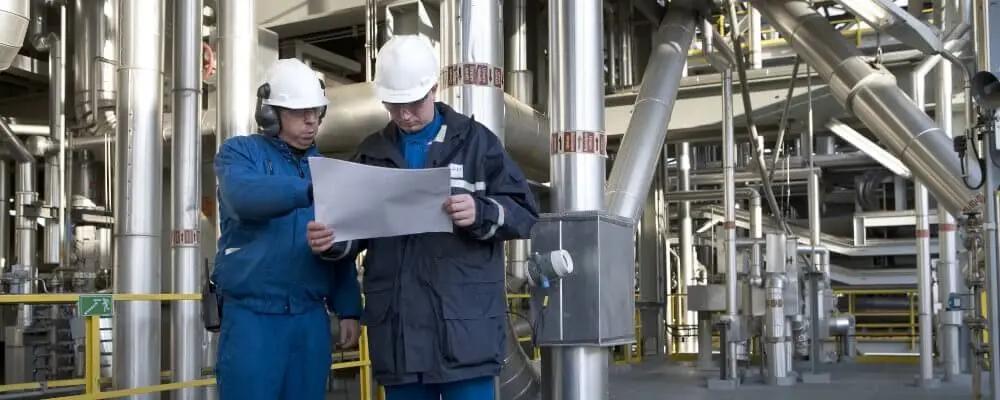In a world marked by the intertwining of complex systems and processes, identifying potential hazards and ensuring operability is paramount. Hazard and Operability Analysis, or HAZOP, serves as a beacon in the intricate realm of risk management, spotlighting vulnerabilities in various systems and processes across diverse industries. This structured and systematic examination technique is invaluable for industries aiming to uphold the highest standards of safety and operability, forming the bedrock of numerous risk assessment strategies.
This blog unfolds the multifaceted aspects of HAZOP, offering a deeper insight into its importance and widespread application in multiple industries, from pharmaceuticals to manufacturing. Here, we will discuss the crucial role HAZOP plays in enhancing safety and mitigating risks, examining its significant impact beyond the conventional boundaries of industrial applications.
The essence of HAZOP lies in its meticulous process, which we will explore, revealing the structured methodology that distinguishes it from other risk assessment tools like Risk Assessment and HAZID (Hazard Identification Study). We will delve into the diverse types of HAZOP, shedding light on its adaptability to various domains and systems, such as process, software, and human reliability HAZOPs.
Further, we will dissect the four fundamental phases of HAZOP analysis and study distinct examples that elucidate the versatile application of this method. By the end of this exploration, readers will gain a comprehensive understanding of HAZOP’s intrinsic value in navigating the intricate labyrinth of risks in our increasingly complex world. The insights provided herein are designed to equip industry professionals, safety officers, and curious minds with the knowledge to implement and appreciate the profound impact of HAZOP in fostering a safer and more operable environment.

What is HAZOP? Meaning and Definition
HAZOP, or Hazard and Operability Analysis, is a structured and systematic technique used primarily for risk assessment. This method specializes in identifying potential hazards and operability problems in systems during the design and operational phases, particularly in the chemical, pharmaceutical, oil and gas, and other process industries.
It involves a meticulous examination of processes to detect areas where deviations from the intended design or operational functions can occur, using sets of “guide words” to help in identifying these deviations. HAZOP is vital in predicting potential risks associated with deviations, aiming to mitigate any harm to people, property, the environment, and the business.
The fundamental theory behind HAZOP is that risks and unintended consequences arise from deviations from the original design or operational intentions. The application of guide words in a systematic manner is a unique feature of HAZOP, designed to stimulate the imagination of team members in identifying potential risks.
The approach is qualitative and relies heavily on the collective expertise and experience of the assembled multidisciplinary team, making it an inductive risk assessment tool. The process helps uncover vulnerabilities in systems, enabling organizations to enforce proactive measures, ensure safety, and maintain compliance with relevant standards and regulations.
Importance of HAZOP for Multiple Industries
The importance of HAZOP across multiple industries cannot be overstated, as it serves as a proactive measure in identifying and managing potential risks and hazards in system processes and operations. Industries such as chemical, pharmaceutical, oil and gas, nuclear, and mining routinely involve intricate processes and handle materials that can pose significant risks to both human life and the environment.
In these industries, HAZOP is crucial as it helps in the early detection of deviations and anomalies in the design and operational phases, allowing for timely intervention and mitigation. The approach not only enhances the safety of the workplace but also aids in avoiding substantial financial losses and reputational damage that can result from operational failures or accidents.
Additionally, the insights gained from HAZOP studies enable continuous improvement in processes and safety measures, fostering a culture of safety and operational excellence across the organization. The method also aids in compliance with industry standards and regulations, thereby avoiding legal ramifications and fostering sustainable and responsible industrial practices.

Difference Between HAZOP, Risk Assessment, and HAZID
HAZOP, Risk Assessment, and HAZID are all vital processes in identifying and managing risks, but they differ in their scope, methodology, and application.
HAZOP (Hazard and Operability Study)
- Scope & Methodology: HAZOP is a qualitative, detailed, and systematic method used to identify potential hazards and operability problems in a process system. It employs guidelines to evaluate possible deviations from the intended design or operation.
- Application: Predominantly used in industries like chemical, pharmaceutical, oil, and gas, where processes are complex, and the risk of deviation from intended operations is high.
Risk Assessment
- Scope & Methodology: Risk Assessment is a broader term encompassing various techniques to identify, analyze, and evaluate risks. It involves identifying hazards, analyzing and evaluating the risks associated with that hazard, and determining appropriate ways to eliminate or control the hazard. It can be either qualitative or quantitative and may be less detailed compared to HAZOP.
- Application: It is a universal approach applicable across various industries and sectors, and it can address a wide range of risks, including operational, financial, and strategic risks.
HAZID (Hazard Identification Study)
- Scope & Methodology: HAZID is a high-level qualitative method used primarily in the early stages of a project to identify potential hazards and environmental impacts. It usually precedes HAZOP and focuses on broader hazard identification rather than the detailed analysis of deviations.
- Application: It is commonly used in the early design phases of projects across industries like oil and gas, chemical, and construction to inform the subsequent design and risk management processes.
In summary, while HAZOP focuses on detailed analysis of deviations in design or operational intentions, Risk Assessment is a broader approach for analyzing and evaluating risks associated with identified hazards. HAZID is a high-level, early-stage process used to identify potential hazards and environmental impacts in a project.

HAZOP Study Process
A Hazard and Operability (HAZOP) study process is a structured and systematic examination of a planned or existing process or operation in order to identify and evaluate problems that may pose risks to personnel or equipment or prevent efficient operation. The HAZOP study process typically includes the following steps:
1. Build a HAZOP Team
Building a HAZOP team involves forming a multidisciplinary group of professionals with varying expertise relevant to the system or process under review. The team typically consists of a team leader, process engineer, design engineer, operations personnel, maintenance personnel, safety officer, and other experts, if needed.
The objective of having a diverse team is to ensure a wide range of perspectives and insights based on different areas of expertise. This diversity aids in a comprehensive examination of potential deviations and their implications, fostering richer discussions and more robust risk identification and management solutions.
2. Identify Processes, P&ID, and HAZOP Nodes
This step involves defining the scope of the study by identifying the processes in operations that need examination. The team reviews Piping and Instrumentation Diagrams (P&ID) for a visual representation of the process under review.
Nodes or sections in the process, typically points where changes occur, are selected for review. The identification of nodes is crucial as it dictates the focus areas of the HAZOP study and helps in the systematic evaluation of different parts of the process.
3. Define Parameters, Determine Deviations, and Select Guide Words
Here, operational parameters or safe operating limits for each identified node are defined. These parameters are foundational benchmarks against which deviations are measured. Possible deviations from the intended operation are identified using guide words like “no,” “more,” “less,” “as well as,” and “part of.”
These guidewords act as catalysts for thought, enabling the team to systematically and thoroughly explore potential deviations from the design or operational intent, illuminating risks not evident under normal operating conditions.
4. Identify Causes, Consequences, and Controls
In this step, the team determines potential causes for each identified deviation and assesses the possible consequences of each deviation. Understanding causes and consequences is vital for implementing effective control measures.
Existing safeguards are identified, and additional measures are proposed if necessary. This step is pivotal for understanding the interplay between different elements in a system and aids in crafting well-informed, holistic risk mitigation strategies.
5. Risk Ranking
Risk ranking involves the assessment and prioritization of the risks associated with each deviation. The risks are ranked based on their likelihood and the severity of the harm they may cause. This step is essential as it enables the organization to allocate resources efficiently and decide on the appropriate actions to mitigate the highest-priority risks, contributing to the overall enhancement of system safety and reliability.
6. Recommendations and Action Plans
Recommendations to mitigate the identified risks are proposed in this step, and detailed action plans are developed. These plans typically specify responsible persons, deadlines, and the resources needed.
The crafting of well-defined, actionable recommendations is crucial as it sets the course for the actual implementation of risk mitigation strategies, reinforcing the safety and integrity of the process or system under study.
7. Documentation
Every finding of the HAZOP study is systematically documented, including deviations, causes, consequences, safeguards, and recommendations. Comprehensive HAZOP study reports are generated for future reference and communication. Proper documentation is paramount as it serves as a repository of invaluable insights gained during the study and a reference point for future risk management endeavors and audits.
8. Follow-up and Review
The recommended actions are implemented and regularly reviewed to ensure their effectiveness. Any necessary adjustments are made based on these reviews. The communication of the results of the HAZOP study, the changes made, and any other relevant information to all stakeholders is crucial in maintaining transparency and collective awareness about the safety measures in place.
9. Revalidation
HAZOP studies are conducted periodically, especially when modifications or changes in the process are made, to revalidate the findings and recommendations. Continuous improvement is sought, utilizing the insights gained from the HAZOP study to enhance safety, operability, and efficiency continuously.
Regular revalidation ensures that the risk management strategies evolve in tandem with any changes in the system, ensuring sustained operability and safety.
By meticulously following these steps, organizations can uncover potential hazards, operability issues, and inefficiencies within their processes, thereby enhancing safety and operational performance.

Types Of HAZOP
HAZOP studies can be categorized into different types based on their focus and application area. Below are several types of HAZOP:
1. Process HAZOP
This type focuses on analyzing processes, particularly in chemical or manufacturing plants. It aims to identify risks related to equipment failure, operational errors, or deviations from intended process conditions, which could lead to accidents or suboptimal product quality.
2. Procedure HAZOP
Procedure HAZOP studies focus on the analysis of operational or maintenance procedures. It explores the potential hazards and operability issues that may arise due to deviations from the prescribed steps, sequences, or conditions outlined in the procedures.
3. Software HAZOP
This is applied to the development and operation of software systems, particularly those involved in controlling industrial processes. It examines potential hazards and operability issues related to software errors, malfunctions, or unintended interactions with other system components.
4. Human Reliability HAZOP (HRA HAZOP)
This form is specialized in identifying and evaluating human errors that can affect system performance. It focuses on analyzing tasks and actions performed by operators and other personnel and exploring potential deviations due to human mistakes, misinterpretations, or inattention.
5. Batch HAZOP
Batch HAZOP is particularly suitable for processes that are not continuous and are operated in batches, common in the pharmaceutical and specialty chemical industries. It considers deviations that could occur during different phases of batch processing, such as mixing, heating, or cooling.
6. Parameter HAZOP
This type focuses on the parameters of the system or process, like temperature, pressure, and flow rate. It investigates the potential hazards and operability problems that could arise if these parameters deviate from their intended values or ranges.
7. Design HAZOP
Design HAZOP studies focus on the early phases of the development of a new process or product. They aim to identify potential hazards and operability issues that could arise due to flaws or oversights in the design concepts or specifications.
8. Materials HAZOP
Materials HAZOP focuses on analyzing the materials used in a process or system. It aims to identify hazards and operability issues related to the properties, compatibility, and interactions of different materials, such as corrosion, contamination, or reaction hazards.
Each of these HAZOP types has a specific focus but shares the common objective of identifying potential hazards and operability issues systematically and comprehensively, enabling the implementation of effective control and mitigation measures.

4 Phases of HAZOP Analysis
HAZOP Analysis is generally categorized into four main phases to streamline the process and ensure a thorough examination of the system. Each phase plays a crucial role in identifying hazards and assessing risks.
1. Preparation Phase
In the preparation phase, the groundwork for the HAZOP study is laid out. This involves defining the scope of the study, selecting the HAZOP team, gathering relevant information, and preparing necessary documentation. This phase is crucial as it sets the stage for the subsequent phases, and proper preparation is essential for conducting an effective HAZOP study.
2. Examination Phase
During the examination phase, the HAZOP team systematically investigates each part of the process, employing guidewords to identify potential deviations from the intended design or operation. This phase involves identifying the causes and consequences of deviations, assessing existing safeguards, and proposing additional measures if necessary. This meticulous examination is pivotal for revealing hidden hazards and operability problems that may not be apparent during regular operations.
3. Risk Assessment and Recommendations Phase
In this phase, the risks associated with each identified deviation are assessed and ranked based on their likelihood and severity. This phase enables the team to prioritize the identified risks and allocate resources effectively. Based on the risk assessment, recommendations are made to mitigate the identified risks. Developing actionable recommendations is vital for enhancing the safety and operability of the system or process under review.
4. Reporting and Follow-up Phase
The final phase involves documenting all the findings, recommendations, and action plans in a comprehensive HAZOP report. This report is a crucial document for communicating the results of the study to stakeholders and serves as a reference for future risk management endeavors. The implementation of the recommended actions is monitored, and their effectiveness is reviewed regularly.
Any necessary adjustments are made to ensure the continued relevance and effectiveness of the risk mitigation strategies in place. Regular communication with stakeholders and periodic revalidation of the findings and recommendations are also integral parts of this phase to ensure sustained safety and operability.
Each of these phases contributes to a holistic and rigorous HAZOP Analysis, enabling organizations to proactively manage risks and enhance the safety and reliability of their systems and processes.

Different HAZOP Examples
HAZOP can be applied to various industries and processes, and here are a few illustrative examples:
1. Chemical Manufacturing Process
In a chemical plant, a HAZOP study might focus on a reactor where different chemicals are mixed to create a product. Guide words such as “More” can help in identifying risks like overpressure due to the excessive addition of reactants, and “Less” can reveal risks like insufficient mixing leading to a non-homogeneous product. The study will identify causes, consequences, existing safeguards, and any additional recommended measures to mitigate identified risks.
2. Oil Refinery
For an oil refinery, a HAZOP might analyze the distillation column, using guide words like “No” to explore scenarios like no flow, identifying potential causes like pump failure, and investigating the consequences like equipment damage or production loss. Recommended safeguards may include installing alarms or interlocks to detect and rectify such deviations early.
3. Pharmaceutical Manufacturing
In a pharmaceutical manufacturing process, a HAZOP study may be focused on a tablet compression machine. Using the guide word “Reverse,” the team could explore scenarios where the machine operates in reverse, analyzing causes like control system malfunction and potential consequences like equipment damage or compromised product quality. The study may recommend implementing control system checks and regular maintenance as safeguards.
4. Food Processing Industry
A HAZOP in a food processing plant might examine the heating process. The guide word “As well as” could be used to consider risks related to the presence of foreign materials in food items, identifying causes like equipment wear and consequences like contaminated products. Recommended mitigations may include installing metal detectors and regular equipment inspections.
5. Wastewater Treatment Plant
In a wastewater treatment plant, a HAZOP study might analyze a sedimentation tank. Using the guide word “Other than,” the study might explore deviations such as the presence of substances other than intended, exploring causes like cross-contamination and consequences like ineffective treatment. The study could recommend enhanced monitoring and isolation procedures as mitigation measures.
6. Power Generation
For a power generation plant, a HAZOP study could be carried out on a boiler. Guide words like “More” could help explore scenarios like excessive temperature, identifying causes like burner malfunction, and consequences like equipment failure or fire. Recommended measures could include installing temperature monitoring and control systems.
In each example, the HAZOP methodology, through the structured use of guidewords and systematic analysis, helps in identifying and assessing potential deviations and their associated risks, leading to enhanced safety and operability in different industrial sectors.
Conclusion
In conclusion, HAZOP stands as a pivotal pillar in the realm of risk management, providing a systematic and structured lens through which potential hazards and operability issues can be scrutinized and addressed. Its universal application across various industries underscores its vital role in safeguarding operations and mitigating risks, enhancing overall safety and functionality.
By intricately weaving through the webs of processes, HAZOP illuminates the possible deviations and vulnerabilities, allowing organizations to preemptively address and rectify potential sources of harm.
The meticulous methodology of HAZOP, coupled with its in-depth analysis and adaptability, separates it from other risk assessment tools and reinforces its significance in the contemporary industrial landscape. Whether it is uncovering unseen hazards, fortifying operational protocols, or fostering an environment of continuous improvement and learning, HAZOP is instrumental.
The insights gained from exploring the different facets of HAZOP in this blog illustrate the paramount importance of this analytical tool in navigating the complexities and uncertainties inherent in today’s diverse and dynamic operational environments, ultimately contributing to a more resilient and secure world.

